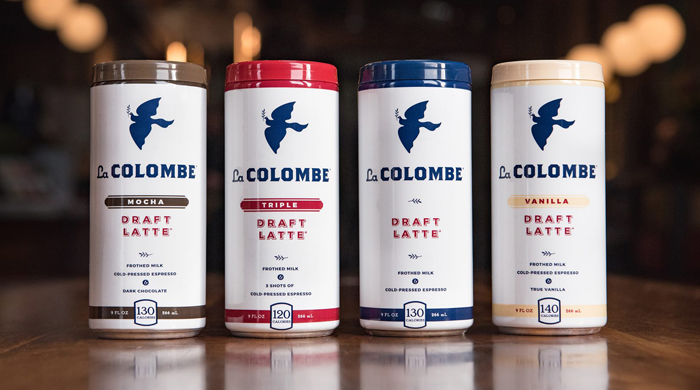The craft beer industry’s influence on food and beverage goes beyond innovation pipelines and marketing efforts.
For non-alcoholic beverages in particular, the rise of craft beer had a huge impact in that it brought a perception of premium back to cans. The craft beer industry, which was historically built around glass bottles, began to embrace cans in 2010 for the material’s ability to stay airtight and block out all light in order to preserve the brew’s quality. While at first there was hesitancy to switch to cans among consumers, now a majority of craft brewers make 4-pack cans their standard offering. That has also overspread non-alcoholic products,including everything from waters and juices to coffee and tea. Many ready-to-drink beverages also look to cans as the best option for their products due to their quality assurance and shipping ease.
“I think craft beer has done a ton for the appeal of the can,” Spindrift CEO Bill Creelman said. “The fact that cans are more recognizable in the premium space — and that just the whole process is better, from the graphics to the manufacturing, as a result of the craft beer movement — has helped us and helped consumers identify craft and premium with that package type.”
This knowledge is transferable because the beverage industry and the craft beer industry share a core consumer. Melissa Abbott, VP of retainer services at consulting firm the Hartman Group, told NOSH that she thinks the “super nerds” of the beer world are a subset of a larger group of consumers who openly explore other craft categories.
Just look at the rise in cold-brew and ready-to-drink coffees. Cans in particular have enabled beer consumers who are familiar with nitrogen-infused products to sip on them outside of a bar, taproom or cafe. Guinness has been doing it for decades, and now a slew of high-end coffee brands and craft brewers, as well as Sam Adams and Starbucks, are getting in on the practice by infusing their beers and coffees with nitrogen in order to create a cascade of foamy bubbles and a smooth mouthfeel. Brands like Stumptown Coffee, Cuvee Coffee and Rise Brewing Company broke free from their keg cages with the development of gadgets specifically for cans to facilitate the nitro-infusion.
“It’s validation,” Mike McKim, co-founder and CEO of Austin-based Cuvee Coffee, told BevNET in an interview earlier this year. “It moves the product out of this niche category into obviously something that very smart successful beverage companies are willing to invest money and energy into.”
Beyond packaging, the shared craft beer and food consumer also considers craft products to be free from heavily industrialized processing, according to Abbott. Fermentation, brewing and baking are processes booming in craft across all three industries because they are easy for the consumer to visualize, she said. Fermentation and its gut-health boosting attributes have in particular been booming with the rise in popularity of foods like kimchi and beverages like kombucha. Creelman said he is also seeing this interest in process spill over into other non-alcoholic beverages, too.
“[It’s] those who are just naturally curious about the process, about how beer is made, why ingredients are added at certain times in the process, or even the aging and barrel-aging interesting stuff that the new generation of craft is doing,” he said. “[Those] same consumers are starting to apply that same thinking to sparkling water.”
Read more about how the success of the craft beer industry has shaped CPG at Project NOSH.

